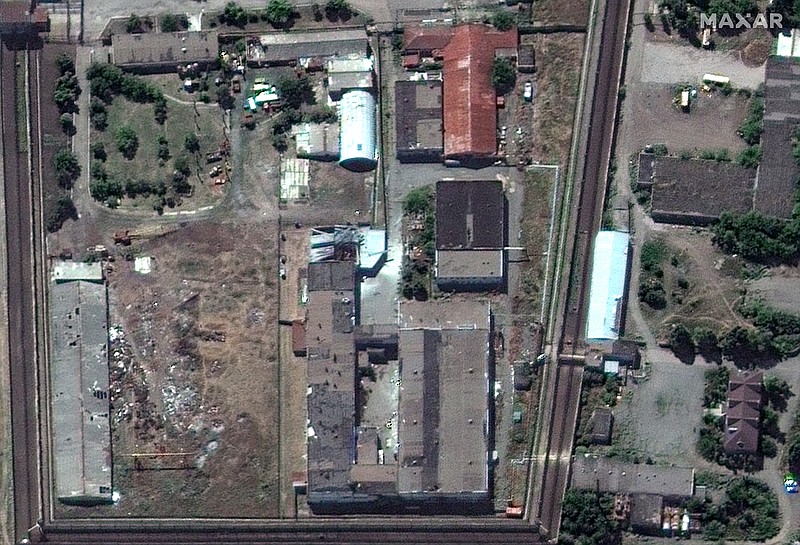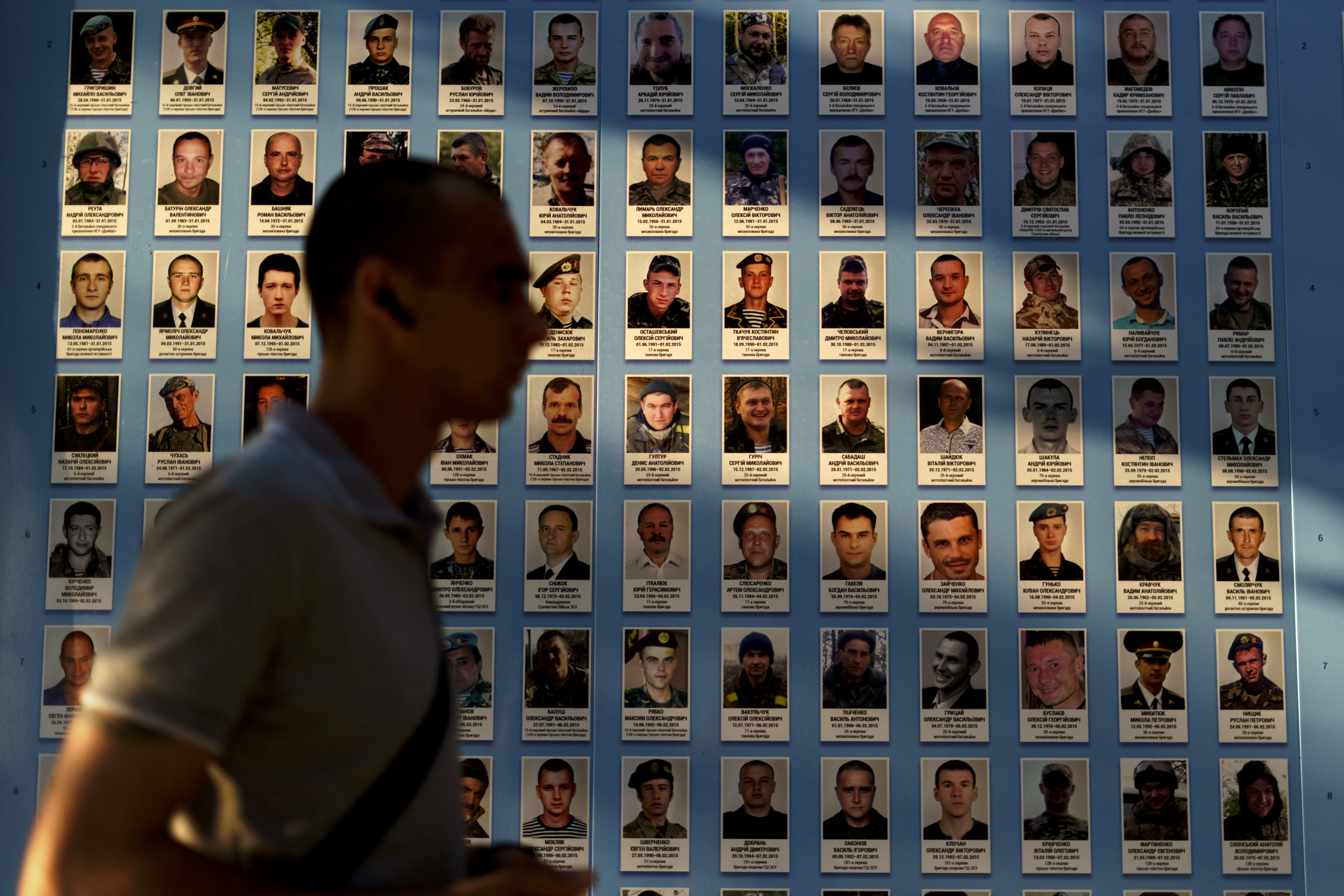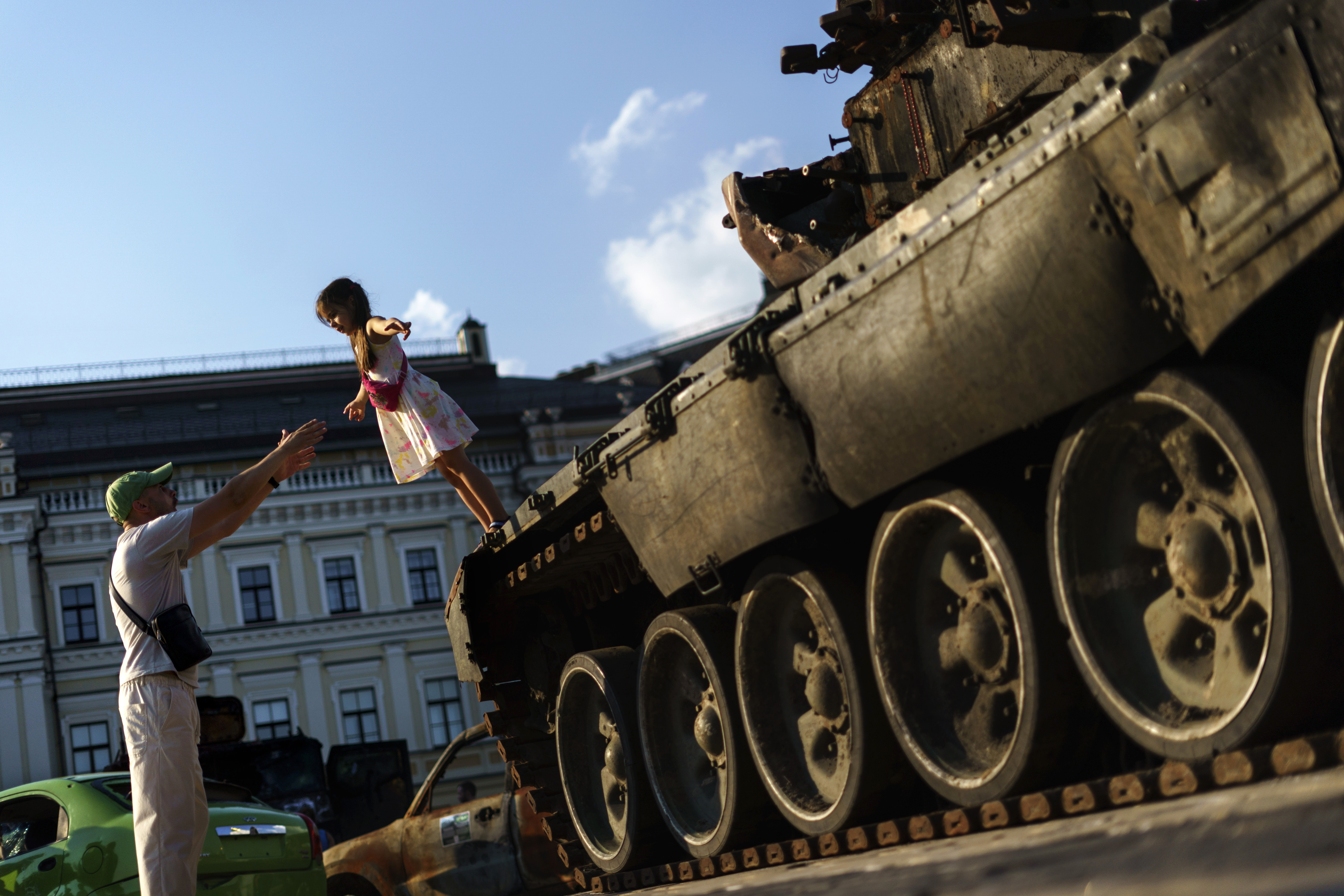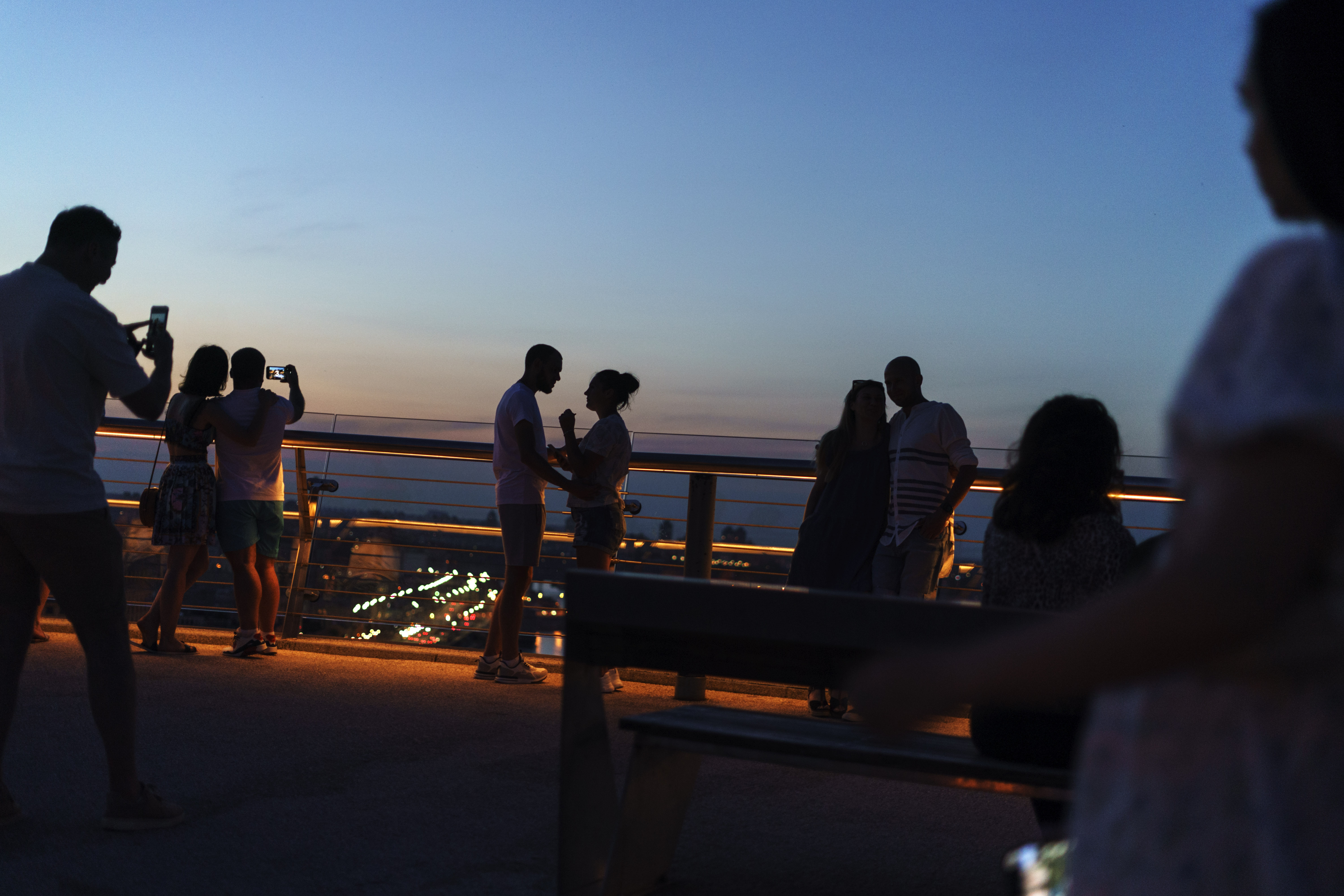KYIV, Ukraine -- A small explosive device carried by a makeshift drone blew up Sunday at the headquarters of Russia's Black Sea Fleet on the Crimean Peninsula, wounding six people and prompting the cancellation of ceremonies there honoring Russia's navy, authorities said.
There was no immediate claim of responsibility for the drone explosion in a courtyard at the naval headquarters in the city of Sevastopol, but the seemingly improvised, small-scale nature of the attack raised the possibility that it was the work of Ukrainian insurgents trying to drive out Russian forces.
A Russian lawmaker from Crimea, Olga Kovitidi, told Russian state news agency RIA-Novosti that the drone was launched from Sevastopol itself. She said the incident was being treated as a terrorist act, the news agency said.
Crimean authorities raised the terrorism threat level for the region to "yellow," the second-highest tier.
Sevastopol, which was seized along with the rest of Crimea from Ukraine by Russia in 2014, is about 100 miles south of the Ukrainian mainland. Russian forces control much of the mainland along the Black Sea.
The Black Sea Fleet's news service said the drone appeared to be homemade. It described the explosive device as "low-power." Sevastopol Mayor Mikhail Razvozhaev said six people were wounded. Observances of Russia's Navy Day holiday were canceled in the city.
Ukraine's navy and an adviser to President Volodymyr Zelenskyy said the reported drone attack underlined the weakness of Russian air defenses.
"Did the occupiers admit the helplessness of their air defense system? Or their helplessness in front of the Crimean partisans?" Oleksiy Arestovich said on Telegram.
If such an attack is possible by Ukraine, he said, "the destruction of the Crimean bridge in such situations no longer sounds unrealistic" -- a reference to the span that Russia built to connect its mainland to Crimea after the annexation.
TARGETED KILLING?
Elsewhere in Ukraine, the mayor of the major port city of Mykolaiv, Vitaliy Kim, said shelling killed one of Ukraine's wealthiest men, Oleksiy Vadatursky, and his wife, Raisa. Vadatursky headed a grain production and export business.
Another presidential adviser, Mykhailo Podolyak, said Vadatursky was specifically targeted.
It "was not an accident, but a well-thought-out and organized premeditated murder. Vadatursky was one of the largest farmers in the country, a key person in the region and a major employer. That the exact hit of a rocket was not just in a house, but in a specific wing, the bedroom, leaves no doubt about aiming and adjusting the strike," he said.
Vadatursky's agribusiness, Nibulon, includes a fleet of ships for sending grain abroad.
In the Sumy region in Ukraine's north, near the Russian border, shelling killed one person, the regional administration said. And three people died in attacks over the past day in the Donetsk region, which is partly under the control of Russian-backed separatist forces, regional Gov. Pavlo Kyrylenko said.
Podolyak said on Twitter that images of the prison where at least 53 Ukrainian prisoners of war were killed in an explosion Friday indicated that the blast came from within the building in Olenivka, which is under Russian control.
Russian officials have claimed the building was attacked by Ukraine with the aim of silencing POWs who might be giving information about Ukrainian military operations. Ukraine has blamed Russia for the explosion, saying it was done to cover up the torture and execution of prisoners.
Satellite photos taken before and after show that a small, squarish building in the middle of the prison complex was demolished, its roof in splinters.
Podolyak said those images and the lack of damage to adjacent structures showed that the building was not attacked from the air or by artillery. He contended that the evidence was consistent with a thermobaric bomb, a powerful device sometimes called a vacuum bomb, being set off inside.
The International Red Cross asked to immediately visit the prison to make sure the scores of wounded POWs had proper treatment, but said Sunday that its request had yet to be granted. It said that denying the Red Cross access would violate the Geneva Conventions on the rights of POWs.
Meanwhile, Zelenskyy said the war has significantly reduced the size of Ukraine's grain harvest compared with past years, but that Ukraine is working on ways to export what it has to avoid a global food crisis.
"The Ukrainian harvest this year is in danger of being half as large," he said on Twitter.
Russia and Ukraine recently reached an agreement that would allow the release of millions of tons of grain held up in Black Sea ports. Officials have said they expect the shipments to begin soon.
U.N. MEETING
There was already plenty of trouble to talk about when a major U.N. meeting on the landmark Nuclear Nonproliferation Treaty was originally supposed to happen in 2020.
Now the pandemic-postponed conference finally starts today as Russia's war in Ukraine has reanimated fears of nuclear confrontation and cranked up the urgency of trying to reinforce the 50-year-old treaty.
"It is a very, very difficult moment," said Beatrice Fihn, the executive director of the Nobel Peace Prize-winning International Campaign to Abolish Nuclear Weapons.
Russia's invasion, accompanied by ominous references to its nuclear arsenal, "is so significant for the treaty and really going to put a lot of pressure on this," she said. "How governments react to the situation is going to shape future nuclear policy."
The four-week meeting aims to generate a consensus on next steps, but expectations are low for a substantial -- if any -- agreement.
Still, Swiss President Ignazio Cassis, prime ministers Fumio Kishida of Japan and Frank Bainimarama of Fiji and more than a dozen nations' foreign ministers are among attendees expected from at least 116 countries, according to a U.N. official who spoke on condition of anonymity because he wasn't authorized to speak publicly before the conference.
In force since 1970, the Nonproliferation Treaty has the widest adherence of any arms control agreement. Some 191 countries have joined.
Nations without nuclear weapons promised not to acquire them, while nuclear-armed Britain, China, France, Russia (then the Soviet Union) and the United States agreed to negotiate toward eliminating their arsenals someday. All endorsed everyone's right to develop peaceful nuclear energy.
India and Pakistan, which didn't sign, went on to get the bomb. So did North Korea, which ratified the pact but later announced it was withdrawing. Non-signatory Israel is believed to have a nuclear arsenal but neither confirms nor denies it.
Nonetheless, the Nonproliferation Treaty has been credited with limiting the number of nuclear newcomers (U.S. President John F. Kennedy once foresaw as many as 20 nuclear-armed nations by 1975) and serving as a framework for international cooperation on disarmament.
The total number of nuclear weapons worldwide has shrunk by more than 75% from a mid-1980s peak, largely due to the end of the Cold War between the U.S. and the former Soviet Union. But experts estimate that roughly 13,000 warheads remain worldwide, the vast majority in the U.S. and Russia.
Meetings to assess how the treaty is working are supposed to happen every five years, but the 2020 conference was repeatedly delayed by the coronavirus pandemic.
Challenges have only grown in the meantime.
When launching the Ukraine war in February, Russian President Vladimir Putin warned that any attempt to interfere would lead to "consequences you have never seen" and emphasized that his country is "one of the most potent nuclear powers." Days later, Putin ordered Russia's nuclear forces to be put on higher alert, a move U.N. Secretary-General António Guterres called "bone-chilling."
"The prospect of nuclear conflict, once unthinkable, is now back within the realm of possibility," he said.
The events in Ukraine create a tricky choice for the upcoming conference, said Patricia Lewis, a former U.N. disarmament research official who is now at the international affairs think tank Chatham House in London.
"On the one hand, in order to support the treaty and what it stands for, governments will have to address Russia's behavior and threats," she said. "On the other hand, to do so risks dividing the treaty members."
Information for this article was contributed by Jennifer Peltz, Edith M. Lederer and Liu Zheng of The Associated Press.
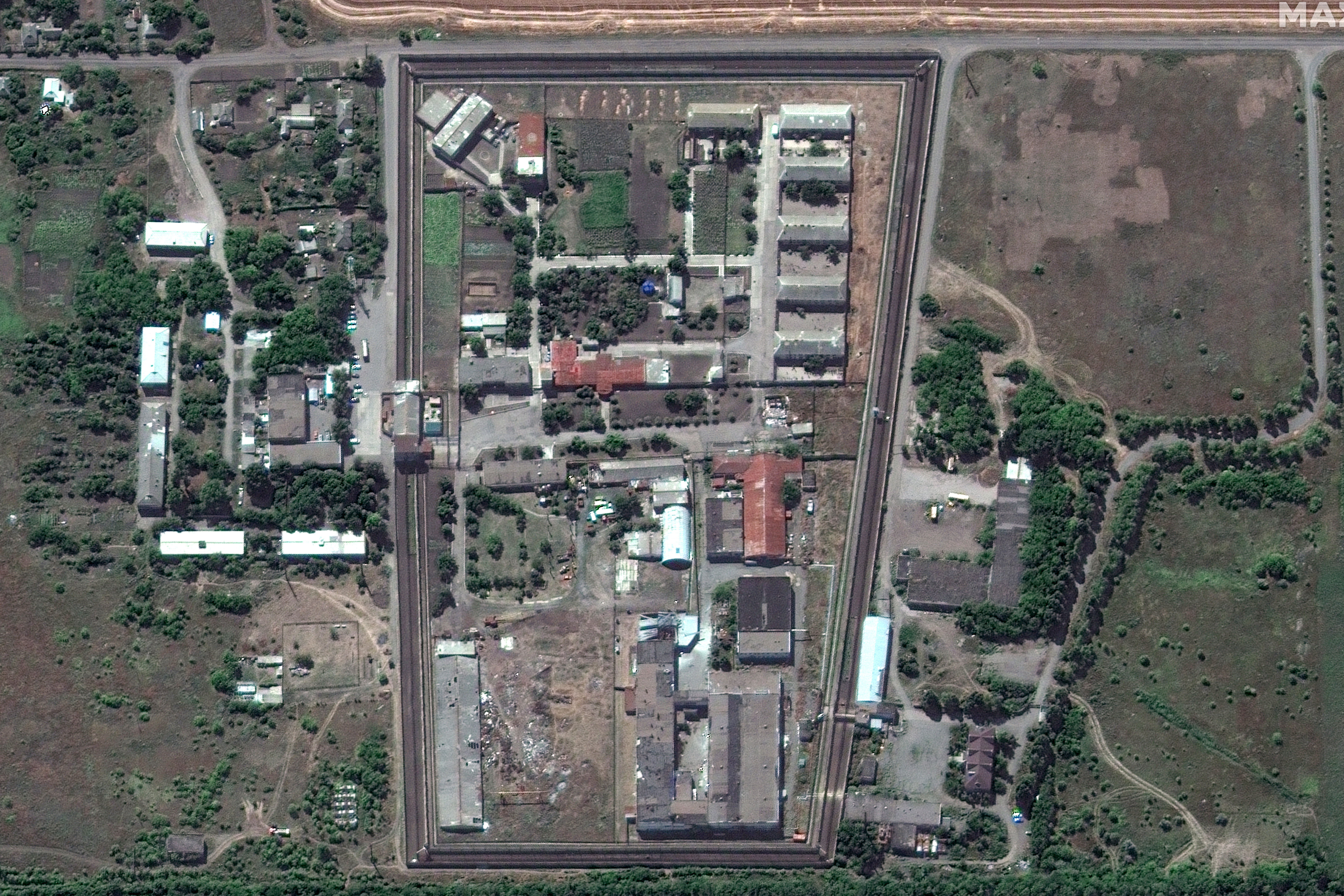 In this satellite photo provided by Maxar Technologies, a view of the Olenivka detention center, in Eastern Donetsk province, after an attack on the prison reportedly killed Ukrainian soldiers captured in May after the fall of Mariupol, a Black Sea port city where troops and the Azov Regiment of the national guard famously held out against a months-long Russian siege. Separatist authorities and Russian officials said the attack killed 53 Ukrainian POWs and wounded another 75. (Satellite image ©2022 Maxar Technologies via AP)
In this satellite photo provided by Maxar Technologies, a view of the Olenivka detention center, in Eastern Donetsk province, after an attack on the prison reportedly killed Ukrainian soldiers captured in May after the fall of Mariupol, a Black Sea port city where troops and the Azov Regiment of the national guard famously held out against a months-long Russian siege. Separatist authorities and Russian officials said the attack killed 53 Ukrainian POWs and wounded another 75. (Satellite image ©2022 Maxar Technologies via AP) A woman looks at a civilian's car shot at by Russian forces exhibited at Mykhailivs'ka Square along with damaged Russian military equipment as a symbol of Ukraine's resistance against the invasion in Kyiv, Ukraine, Saturday, July 30, 2022. According to a plaque displayed by the National Museum of the Military History of Ukraine, the family was evacuating from Bucha when Russian troops opened fire on their convoy injuring two people. (AP Photo/David Goldman)
A woman looks at a civilian's car shot at by Russian forces exhibited at Mykhailivs'ka Square along with damaged Russian military equipment as a symbol of Ukraine's resistance against the invasion in Kyiv, Ukraine, Saturday, July 30, 2022. According to a plaque displayed by the National Museum of the Military History of Ukraine, the family was evacuating from Bucha when Russian troops opened fire on their convoy injuring two people. (AP Photo/David Goldman)Gallery: Images from Ukraine, month 6
